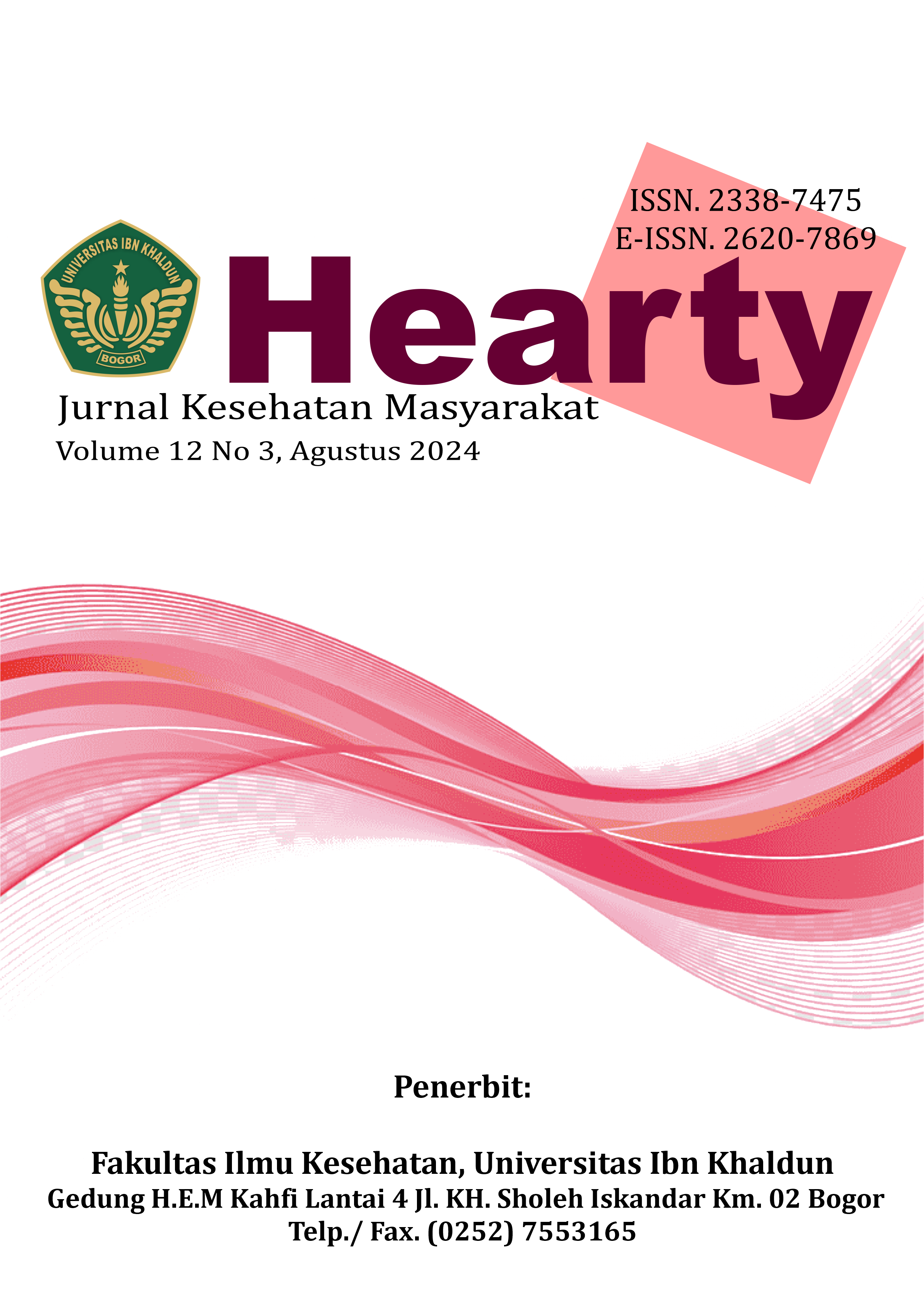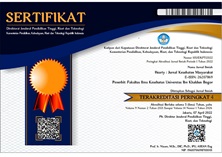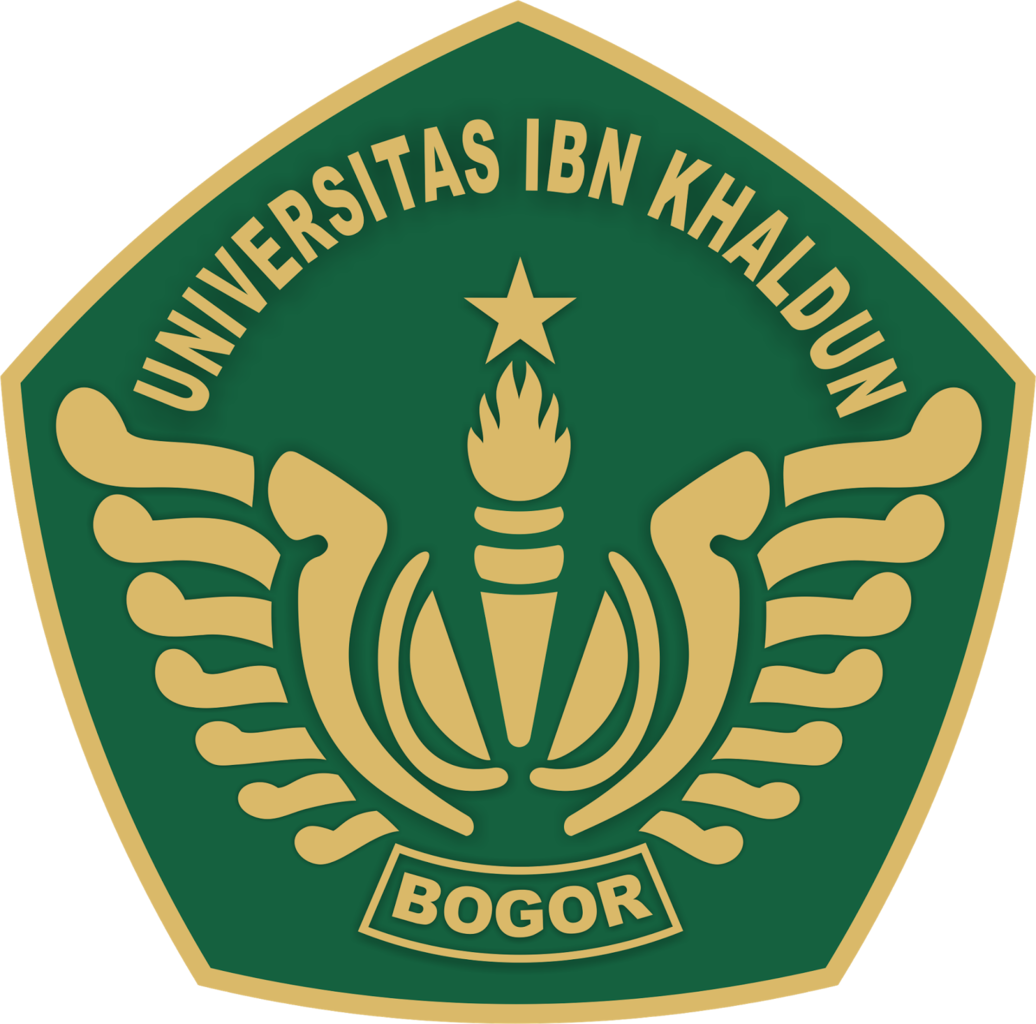THE INFLUENCE OF LETTER AR-RAHMAN MUROTAL THERAPY ON THE ANXIETY LEVEL OF PREGNANT WOMEN IN THE 3rd TRIMESTER AT UPTD CIRINTEN HEALTH CENTER, LEBAK DISTRICT
DOI:
https://doi.org/10.32832/hearty.v12i3.15969Abstract
Background Anxiety is a mood or experience characterized by worry, unpleasant feelings and physical tension. Anxiety and worry in pregnant women, if not treated seriously, will have physical and psychological impacts, both on the mother and the fetus. Of course, non-pharmacological treatment is also needed, one of which is murotal therapy. The therapeutic effect of reading the Qur'an as a medicine for physical and spiritual illnesses, stimulating the holy verses of the Qur'an for mothers can reduce anxiety. Research purposes . The aim of this research was to determine the effect of Ar-rahman letter murotal therapy on the anxiety level of pregnant women in the third trimester in the UPTD working area of the Cirinten Health Center, Lebak Regency. Research method This research was carried out using a quantitative approach with an experimental design, namely a quasi experimental design . The research design used was one group pre and post test without control group design , The sample for this research was 23 people. Research result Research result through shows that the average value of anxiety for pregnant women in the third trimester before being given Murotal Surah Ar-Rahman therapy is 47.435, the minimum value is 33.0, the maximum value is 64.0 and the standard deviation is 9.370 , while the average value of anxiety for pregnant women in the third trimester after being given therapy Murotal Surah Ar-Rahman is 44,000 minimum value 30.0, maximum value 59.0 and standard deviation 8.586. Through the Wilcoxon test , the effect of providing surah Ar-Rahman murotal therapy on the anxiety level of pregnant women in the third trimester at the UPTD of the Cirinten Health Center, Lebak Regency in 2023 (P value = 0.000). Conclusions and recommendations . It is hoped that the results of this research can motivate health workers to use or combine pharmacological and non-pharmacological therapies and can be used as a form of intervention in providing comprehensive midwifery services.
























